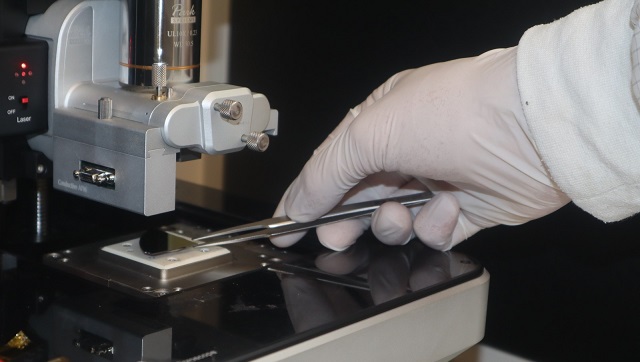Tel Aviv University research reveals two-dimensional crystals exhibiting a unique control of distinct electric potential steps by sliding atomically thin layers against each other. The consecutive, ultimately thin, electrical switches reported are a highly desired resource for information technology and novel electro- and optomechanical applications.
No, this is not about making really thin ladders. This is about a different kind of step. This is about optomechanics, the manufacture and maintenance of optical parts and devices. This is a field that deals with the design and manufacture of hardware used to hold and align elements in optical systems, such as: Optical tables, breadboards, and rails. Mirror mounts.
Basically, this has to do with a very advanced level of scientific research on an atomic level.
Will you offer us a hand? Every gift, regardless of size, fuels our future.
Your critical contribution enables us to maintain our independence from shareholders or wealthy owners, allowing us to keep up reporting without bias. It means we can continue to make Jewish Business News available to everyone.
You can support us for as little as $1 via PayPal at office@jewishbusinessnews.com.
Thank you.
One way to probe the atomic order, explained the researchers, and the electronic charge distribution is to break the symmetry of the cells to induce internal electric fields. Crystals with permanent internal electric fields are called polar crystals. In 2020 the same lab at TAU reported a novel polar crystal by stacking together two layers of a van der Waals crystal, with each layer only one atom thick.
The research, now published in Nature journal, was conducted by Dr. Swarup Deb, M.Sc. student Noam Raab, Prof. Moshe Goldstein, and Dr. Moshe Ben Shalom, all from the Raymond & Beverly Sackler School of Physics & Astronomy at Tel Aviv University, and Dr. Wei Cao, Prof. Michael Urbakh and Prof. Oded Hod from the Chemistry School at TAU, and Prof. Leeor Kronik from the Weizmann Inst.
Dr. Moshe Ben Shalom, head of the Quantum Layered Matter Group, says: “We are fascinated by how the atoms in a condensed matter order, how electrons choose to mix between the atoms, And if orhow external stimulus can manipulate the atomic order and the electric charge distribution.
Answering these questions is challenging due to the enormous number of atoms and electrons, even in the tiniest devices of our most advanced technologies. One of the tricks is to study crystals, which contain much smaller units, each including only a few atoms and electrons. While crystals are made of many identical units, repeated periodically in space, their properties are entirely deduced from the one unit-cell symmetry and the details of the few atoms it captures. And still, it is challenging to understand and predict these details since the electrons spread over all the atoms simultaneously as determined by their joint quantum mechanical interactions.”
The natural order in which Dr. Ben Shalom. recaps:
these crystals grow is symmetric, with each successive layer rotated by 180 degrees compared to the previous one. Here one type of atoms is positioned precisely above the other type. Conversely, the artificial crystals assembled in the lab are not rotated, resulting in a slight shift between the layers, thus straying away from the fully symmetric configurations. This non-symmetric crystal structure forces electrons to jump from one layer to another, forming a permanent electric field between them. Crucially, the group found that applying external electric fields makes the layers slide back and forth to match the direction of the electron’s jump with the external field orientation. They named the phenomena “interfacial ferroelectricity” and pointed out the unique
domain-wall motion that governs the “Slide-Tronics” response.
(https://www.science.org/doi/10.1126/science.abe8177 ).




